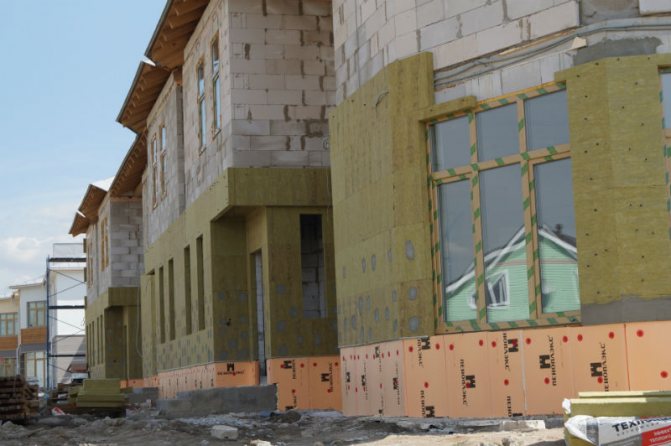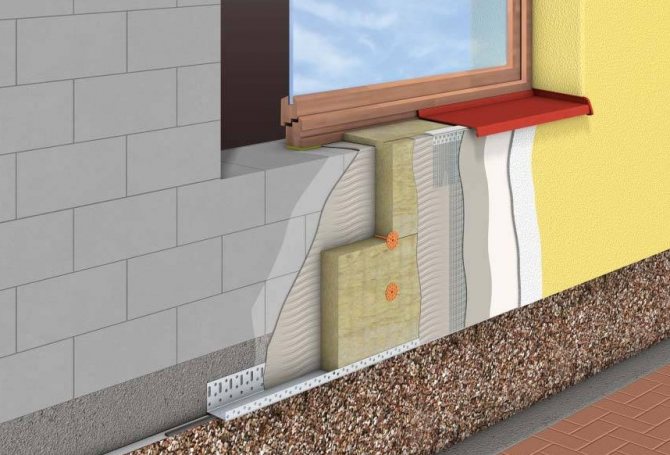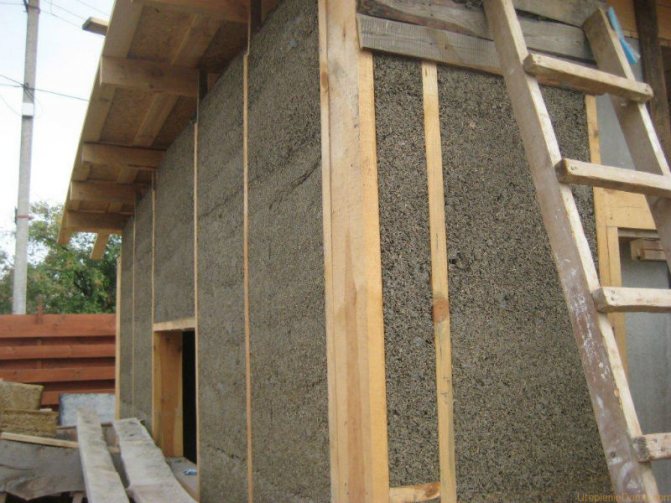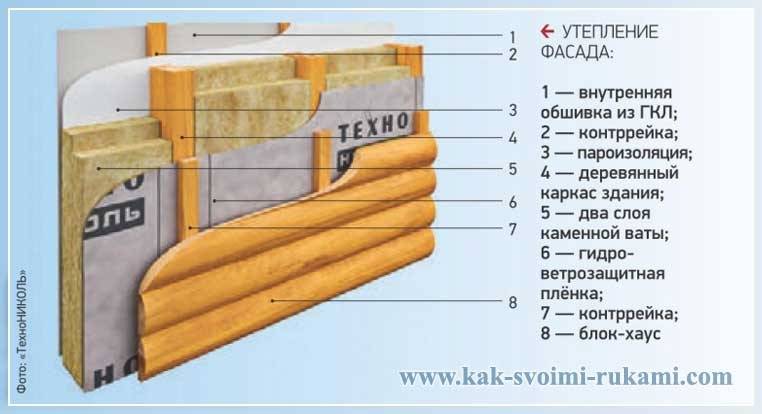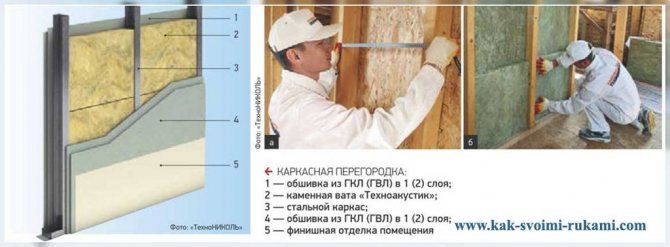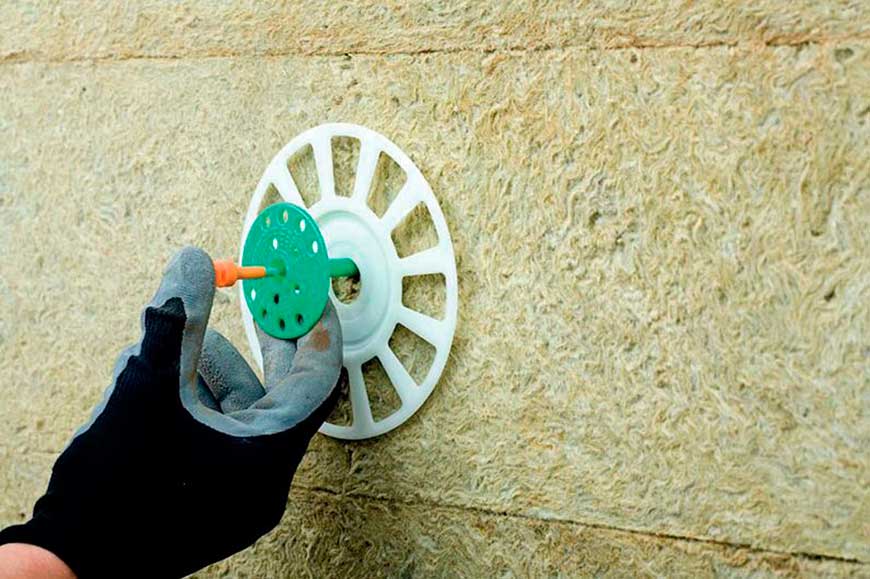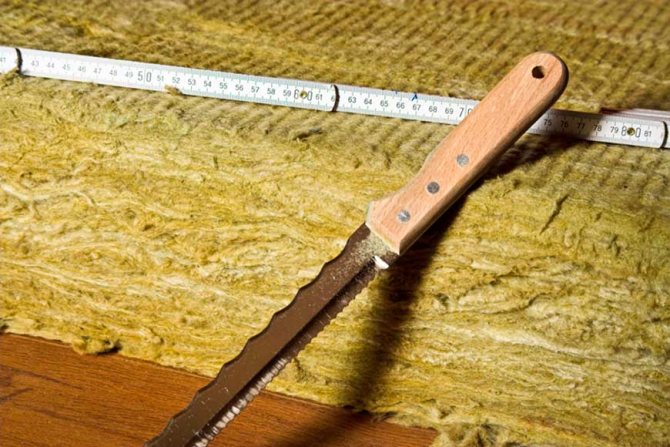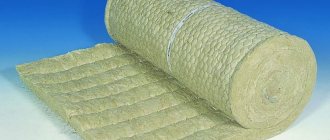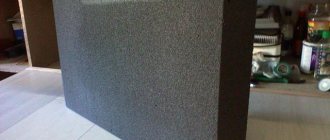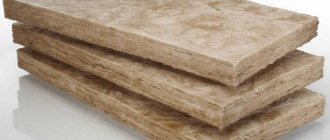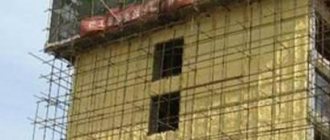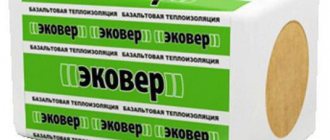Basalt wool is considered one of the highest quality and most widely used heat insulators today.

Made from natural materials, it is safe for residential use. It can be encountered when decorating a house, in the process of building buildings for various purposes. No less widely, this building material is used in the construction of private houses, as well as in the thermal insulation of air ducts.
The use of basalt wool is in demand to ensure thermal insulation of industrial equipment (boilers, boilers, furnaces), process pipelines and pipelines of heating networks. Basalt slabs can be used as unloaded sound and heat insulation in a horizontal enclosing structure of any type of building and structure. In addition, basalt insulation is used for thermal insulation, which is subjected to loads in horizontal, inclined and vertical building envelopes and other types of structures.
Thermal insulation of the roof with basalt wool
Insulation of roofs with basalt wool is a very common use of the material.
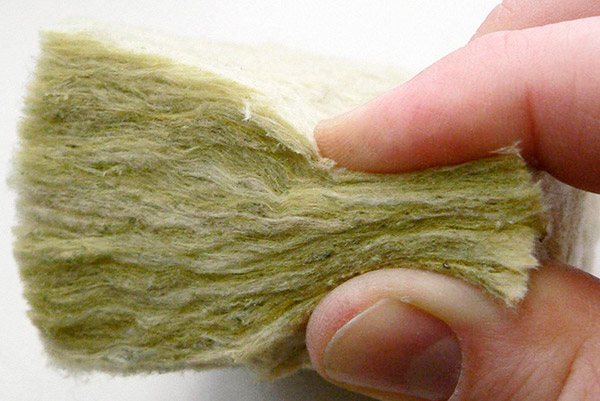

Today, there are special basalt slabs on sale designed for roof insulation. The main advantages of such insulation are the incombustibility of the insulation, high soundproofing, good thermal insulation performance and ease of installation. Such material is produced in the form of plates, cylinders, mats, there is also foil insulation.
Thermal insulation of facades
Basalt insulation is an optimal material for insulation with a set of characteristics that can solve many problems of thermal insulation in any type of structure: from an ordinary residential building to a large enterprise. This building material is resistant to fire, moisture, low temperatures.
Since basalt slabs are characterized by high strength and resistance to weathering, they are the best option for external insulation systems, the so-called thermal insulation of facades. Very often this type of insulation is used with the "wet" facade technology, where the building material does an excellent job with its main function - thermal insulation.


When insulating with basalt slabs, quartz soil, paint on a silicate or silicone base, decorative plaster are used. Silicone based paints allow facades to breathe.
For insulation, it is recommended to use a high-density insulation of 90-135 kg per cubic meter. m. The use of building materials with a lower density is not recommended, as this can lead to slipping of the basalt insulation.


Unlike polystyrene, when installing basalt wool, a fastening such as an umbrella with a metal nail is used. This is due to the large weight of the material, which requires reliable fastening. Thermal insulation of facades with basalt wool is a laborious process and requires responsibility.
Application area
Among the materials for thermal insulation based on stone wool, the most common option is basalt rock wool. It has the highest water repellency properties and is therefore ideal for use in saunas, swimming pools and baths. It makes it possible to carry out thermal insulation of pipeline systems and other communications. Due to the chaotic arrangement of the fibers inside the material, it can withstand the greatest loads, and therefore it is used for warming the foundation and floor.
In terms of strength, stone wool can be elastic and tough. The elastic wool structure is ideal for building structures with unloaded areas, as well as for the manufacture of a well or ventilated facade, which has a low air flow rate and a standard ventilation gap. The use of semi-rigid stone wool insulation is associated with facade ventilation systems that have unlimited air flows. This type of cotton wool will be better installed in air duct structures, where it will provide sound insulation and thermal insulation, as well as fire safety.
Cylindrical stone wool. Segment or semi-cylindrical type is used for thermal insulation of pipeline systems. Rigid wool will be the best option for structures that will be subject to high loads.
Stone wool coating can be of several types:
- Wire.
- Foil.
- Fiberglass.
When reading reviews, consider the main industries of use:
- Insulation in structures for construction purposes - wool makes it possible to construct thermal, fireproof and sound insulation in buildings of any purpose. It will improve the thermal insulation qualities of the facade, ceilings, chimneys, floors and ceilings.
- When technical isolation the use of stone insulation makes it possible to equip ventilation systems, as well as smoke removal or air conditioning systems.
- When installation of fire retardant systems insulation will increase fire resistance for elements such as metal structures and floors. The use of stone wool makes it possible to increase the level of fire safety of the building as a whole.
- When use in shipbuilding stone wool will provide thermal insulation for ships and individual parts.
Insulation of internal walls
Wall insulation with basalt wool can also be performed from the inside of a building, where the building material demonstrates excellent thermal insulation properties. In addition, the insulation also performs the function of sound insulation.
Very often, mineral slabs can be found in the internal partitions of offices and apartments, where they are used to provide sound insulation. Vata absorbs sound very well. However, to isolate airborne noise, it is better to use looser slabs with a low density, and for shock noise it is advisable to use rigid and semi-rigid slabs and mats.
Insulation of a frame house
Warming a frame house with basalt wool is one of the most popular ways to keep warm. After all, the most important requirement of wooden housing construction is fire safety. In addition to the fact that basalt fiber based insulation belongs to the class of non-combustible building materials, it is an excellent means of protecting against fire.
When erecting frame buildings, great attention is paid to the use of thermal insulation as thermal protection of the structure. Most often, thermal insulation is used from the outside.
However, such insulation is also applied from the inside. The method of insulation from the inside is considered less advantageous from a constructive point of view. This opinion is due to the fact that with this method, conditions are created inside the building for the formation of condensate in the inner part of the structure, the presence of which over time leads to a reduction in the operational life of the erected building.


When building frame houses, special attention should be paid to the steam and waterproofing of the walls.
The penetration of moisture into the framework is unacceptable. It is necessary to reliably protect the insulation from external adverse environmental influences, such as: the formation of condensation due to an insufficient level of vapor barrier, as well as the penetration of warm air from the heated room,increased moisture, as a result of moisture penetration through the outer skin of the building. Capillary suction of ground water brings no less harm.
Rigid mats and slabs are used for protection. Due to the fact that there is no ventilation gap in the structures, there is no need to use foil mats and plates.
Basalt wool is a time-tested thermal insulation, but it is very important that when insulating frame houses, the width of the slabs used should exceed the distance between the inside of the frame by 2 cm. This will reliably fix the used material.
The main advantage of basalt wool, in comparison with fiberglass, is its high density, which allows the building material to withstand heavy loads.


Basalt insulation is very popular in the construction of industrial, commercial and private buildings. Such popularity of this material among specialists and ordinary people is explained by the fact that this material is characterized by a number of unique properties, among which the following attracts attention:
Fire safety. The material is non-flammable and able to resist the spread of fire.
Even under the influence of high temperatures, it does not release substances harmful to the human body; Moisture resistance. The material is not hygroscopic. Even without additional waterproofing, it prevents the accumulation of moisture; Frost resistance.


The listed characteristics make it possible to widely use this material for facade insulation. This article will consider the options for using basalt wool and basalt slabs. In particular:
Characteristics and advantages
The most important and first property of stone wool, which allows it to be used as a heat insulator, is its high ability to heat insulation. Thanks to this, it will perfectly cope with the process of regulating the temperature regime inside the room. In the winter season, stone wool will not let the cold into the house, and in the summer it will not let the hot air spoil your well-being. Even at high temperatures, stone wool will not lose its properties, and it will still fulfill all its functions. For this reason, stone wool insulation does not burn, does not ignite and protects the structures insulated by it from fires.
Temperatures over +1000 degrees do not affect the characteristics of the insulation. Even at this temperature, it will not start to melt, will not catch fire and will perform all functions properly. Although the evaporation of the binder occurs already at a temperature of +200 degrees, cotton wool does not lose its fireproof properties and will help to avoid fire and structural destruction when it occurs. For this reason, stone wool has a fairly large field of application, since it can also be used for thermal insulation of high-rise buildings and one-story buildings, as well as for private houses, schools, offices, cottages, etc.
If the binder is of high quality, it will ensure the absence of shrinkage and the constant shape of the cotton for almost the entire period of operation. This property is important, as it helps the insulation to resist mechanical influences. It is also used not only for thermal insulation of walls, but also for the floor, which will be under constant influence / load. If formulations of dubious quality were used in the role of a binder, it will eventually begin to lose its former shape and cease to perform all functions.
Due to the chaotic intersection of stone wool fibers, insulation will be an excellent material in order to protect you from noise from the street. Interior walls, for which stone wool thermal insulation was used, are characterized by a reduced sound level in relation to the adjacent rooms / rooms.
There is another function of the binder, namely moisture resistance and vapor permeability. Such characteristics make it possible to regulate the level of humidity in the room, and at the same time excess moisture will not be absorbed into the insulation, thereby subjecting the structure to destruction, but, on the contrary, removed outside. The indoor climate becomes favorable and comfortable for living. The dry state of cotton wool leads to the fact that fungus, mold will not form in it and other microorganisms will not exist.
Such wool is an environmentally friendly material, and in its production materials of natural origin are used that will not have a negative impact on the environment. The use of cotton wool makes it possible to provide a decent waste of electrical energy, and thus the ecology will be improved and electricity saved.
Facade insulation technology with basalt wool
Basalt wool is used to insulate facades, which will be additionally sheathed with finishing material. This material is most widely used for insulating facades covered with siding.
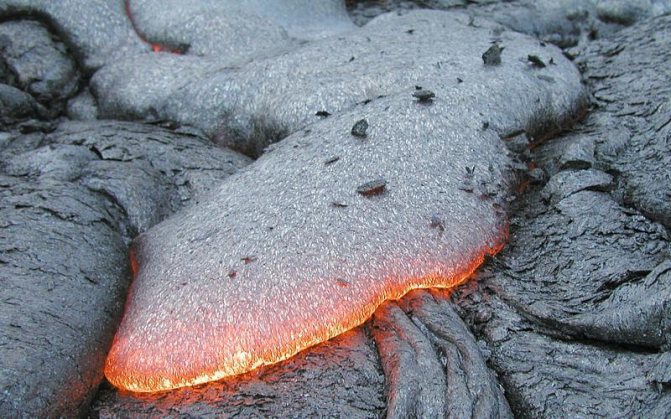

The density of basalt wool should be at least 90–135 kg per cubic meter. m. It is not recommended to use a material of lower density due to the fact that, in this case, there is a possibility of the insulation slipping.
In addition, the thermal insulation characteristics of a less dense material are significantly lower. In any case, the installation of a basalt wool insulation layer requires the manufacture of a reliable frame. It is better if the frame is double, this will eliminate the “cold bridges” in the insulating layer.
Modern industry produces basalt wool in rolls, sheets and cylinders. The most convenient for insulating the walls of a private house are sheets. As a rule, in hardware stores you will be offered the following sizes of basalt wool: 1000 × 500 × 500 millimeters.


The thickness of the basalt wool is a multiple of 50 millimeters. The thermal conductivity of this material ranges from 0.032 to 0.048 W / mK and is identical to the thermal conductivity of foam, foam rubber and cork. Basalt wool is characterized by high vapor permeability, which ensures good moisture exchange with the environment.
The technology of installing an insulating layer based on basalt wool is quite simple and does not require the use of special equipment. With free time and desire, you can do the insulation of the facade with basalt wool with your own hands. The installation algorithm when working with selected materials includes two stages:
- Installation of the frame (lathing); Laying the insulation material.
The frame (lathing) of the insulation structure is made of a metal profile or wooden beams.
Its thickness directly depends on the thickness of the insulation, the width of the cells on the size of the sheet of basalt wool. There are a number of factors to consider when choosing the material that is best suited for the fabrication of the frame. In particular: wall material, climatic conditions (rainfall, wind load, etc.).
In most cases, in private construction, a wooden beam or a galvanized profile is used. All other things being equal, preference should be given to the profile. If the choice when searching for a material is made in favor of a wooden frame, then before installation it is necessary to carefully treat all the wooden parts of the frame with antiseptics and fire retardants.
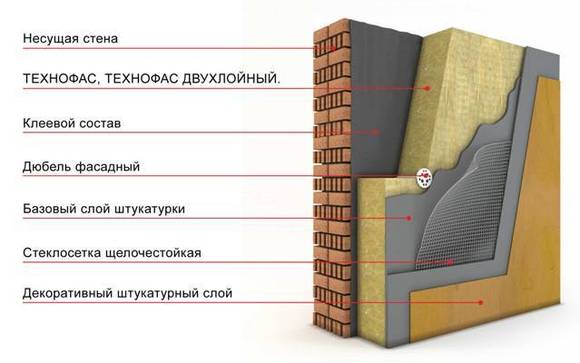

The insulation should be placed between the frame beams as tightly as possible. If the insulation material requires additional waterproofing, then a polyethylene film is used for these purposes.
Application of stone wool
The use of insulation depends on its type and type. Hard and dense slabs, for example, work well under a floating screed. This is the name of the floor, the leveling layer of which is not adhered to the base plate, separated from it by waterproofing. Insulation is needed in the floor slab.
But, rigid stone wool slabs are especially needed in wet façade systems. This is how they call home decoration with liquid mixtures, and not with solid panels, for example, siding. Simply put, plaster is a wet facade. The density and characteristics of dense mineral wool blocks allow the mixture to be applied directly to them.
Among the densest is famous stone wool Rockwool... Its peel strength is at least 10 kilopascals. This allows the wet facade to be attached to the insulation boards together with the reinforcing layer.
Affects the use of stone wool and its thickness. Maximum, for example, helps resist deflection. It occurs with non-standard dimensions between the spans of buildings. In this case, they take not only thick cotton wool, but also mount it horizontally. This saves material consumption.
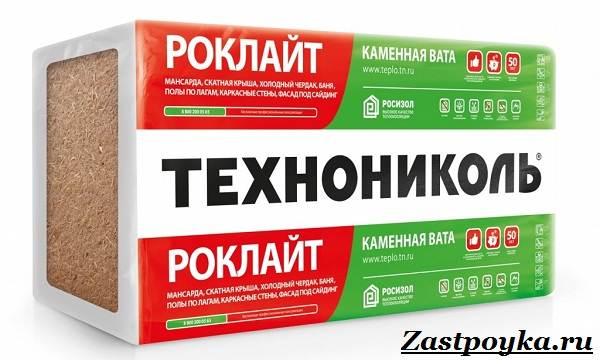

As you can see, when choosing a heater, you should focus not only on the main characteristics, but also on the form of release. If the main thing for the frame is elasticity, then for the floor screed - rigidity.
With proper use and selection, stone wool lasts at least 50 years. The maximum time spent at the "post" is 100 years. The statement has been verified, because the first houses insulated with mineral wool are in the 3rd century.
Facade insulation technology with basalt slabs
Basalt slabs, due to their high strength and resistance to weathering, are the best options for insulation material for external thermal insulation systems in private houses. Their use makes it possible to significantly expand the scope for technical and design solutions related to facade decoration.


This building material is used (as insulation) in the "wet facade" technology.
The surface of basalt slabs can be treated with quartz soil, decorative plaster, silicate and silicone paints. When choosing paint, it is better to give preference to silicone-based solutions. Such paints do not impede the flow of air into the surface of the facade, in other words, they allow the facade to "breathe".
Basalt fiber slabs are characterized by all the physical, chemical and operational characteristics of mineral wool. They do not contain any additives in their structure.
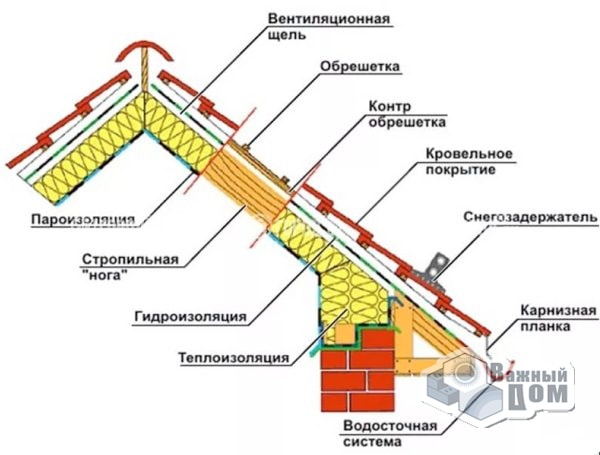

A distinctive feature of basalt slabs is the high manufacturability of this building material. It is easy to transport, store and install.
Warming the facade with basalt slabs with your own hands is within the power of a person who does not have special skills and knowledge. In addition, like mineral wool, the installation process does not require special equipment. Despite the rather high density of the slabs, they can be cut with an ordinary kitchen knife.


The thermal conductivity coefficient of basalt fiber slabs is in the range of 0.035–0.043 W / m * K, which almost corresponds to the indicators of basalt wool. The vapor permeability indicators of these materials are also identical. Due to their denser structure, basalt slabs have good sound insulation properties.
When installing an insulating layer "under plaster", two types of basalt slabs are used - with a random arrangement of fibers and a slab with an arrangement of fibers perpendicular to the wall plane, and the dimensions of the slabs are mainly 120 × 20 cm.
The process of installing basalt slabs "under plaster" has some peculiarities at the stage of laying the insulation. Plates are glued to the walls using special glue and additionally fixed with umbrella dowels. After installing the entire surface of the insulation, the plates are covered with an adhesive solution and reinforced with a special mesh.
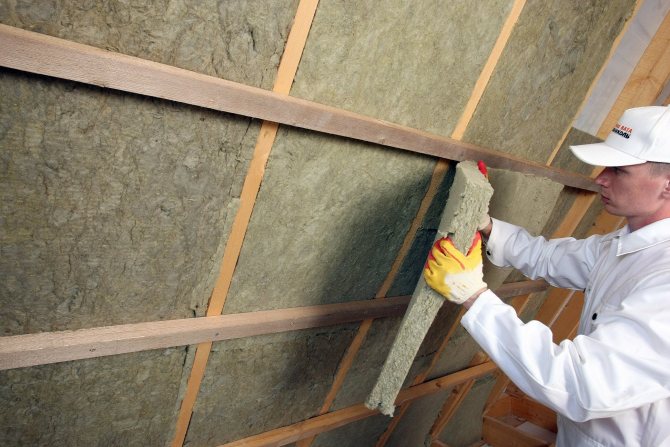

Plates, to a lesser extent than wool, are demanding on the accuracy of the geometric parameters of the frame, but this should not be abused - a tight fit of the insulation to the lathing machines is necessary to ensure a reliable heat-insulating layer.


- Date: 17-09-2015Rating: 33
Basalt insulation has natural materials in its structure.
It is based on volcanic rock material and is produced in the form of heat-insulating slabs that help to insulate walls and facades. Basalt slabs are insulation in the form of panels that have a fairly rigid fibrous structure. This structure contains basalt fibrous threads, which are interconnected by various additives and synthetic elements.
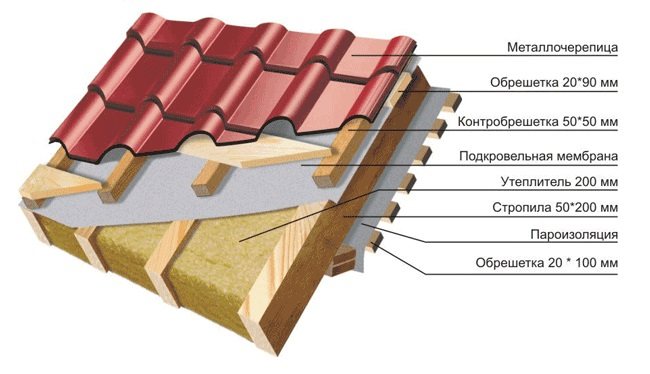

Basalt insulation is made from volcanic rocks by high-temperature melting and subsequent blowing.
One of the important components of any private house is its insulation. Thermal insulation of the house allows you to keep it cozy and comfortable.
The use of basalt will fully help to achieve this task. The experience of using it has shown that such wall insulation is not only reliable and safe, but also fireproof. Those. it can be used for almost any room.


Various forms of basalt insulation make it possible to insulate various structures.
The raw material for such a material is a thin fiber from rocks of magmatic origin. These include basalt, andesite, diabase, etc. In the process of high-temperature melting of these materials (1400-1600 degrees) and their subsequent blowing with the help of a high-speed gas jet, the molten mass is gradually converted into staple fibers.
Next, the resulting fibers are placed in a drum. There, the threads are intertwined in a chaotic state and reach the required density. After cooling to 200 degrees, the resulting mass hardens, and it is given the desired shape.
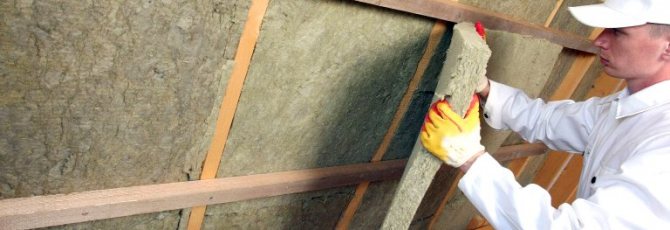

Its form can be of several types:
- Material in the form of slabs (has a formed structure of various thicknesses and areas). Bulk material (made by granules that have different densities and sizes). Basalt wool (made in the form of soft rectangular tiles). Shapes in the form of mats (they consist of quilted fibers, to eliminate the loss of their shape) .Lamellar forms (can be square and rectangular). Basalt fabric (in rolls).
All these materials will provide sufficient protection for the house from freezing, but basalt slabs, due to their ready-made shapes and sufficient thickness, are the most convenient.
Back to the table of contents
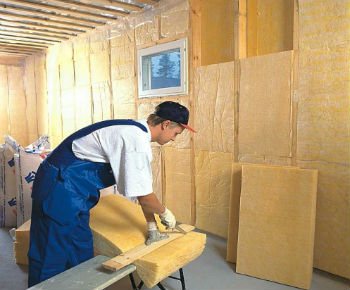

Scheme of roof insulation made of metal tiles.
The procedure for laying the material for thermal protection of the house must be developed at the stage of its design.
It is necessary to immediately determine the possible places of heat leakage. In each house, they will be their own because of its architectural features and location. The most challenging areas will be the attic, roof, slabs and façade.
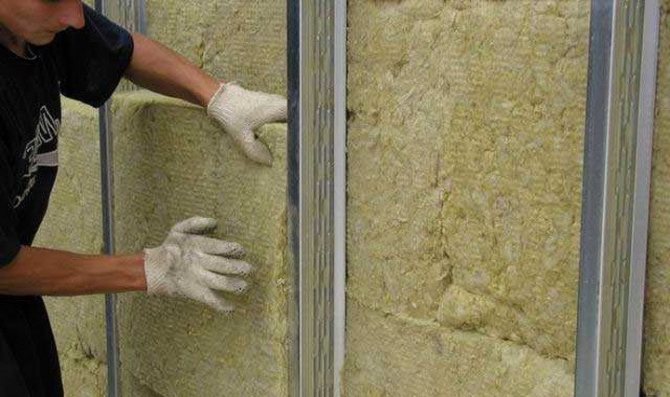

When laying basalt slabs that provide thermal protection to the roof, it is necessary to use a film to create a vapor barrier. It should be laid on horizontal bars between the rafters.
The resulting joints must be sealed with a special tape. The thickness of the layer to be laid should be 180-200 mm. Next, you need to lay a layer of wind protection and make a crate with beams (to ensure ventilation).
In the process of insulating the attic, the insulation must be laid between the logs that are on the floor of the attic. The equal distance between them will ensure the ease of laying basalt slabs. And the resulting gaps need to be covered with cellulose insulation.
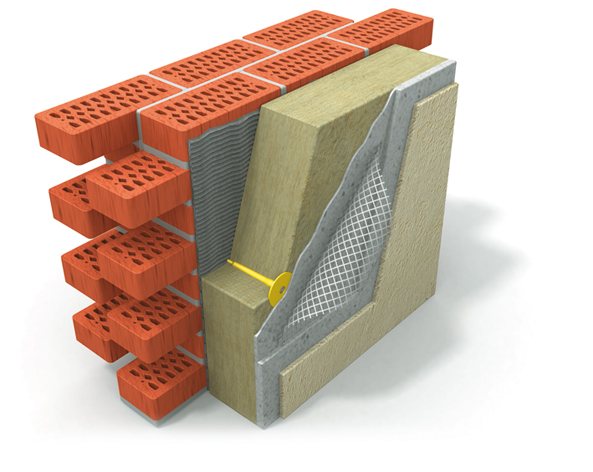

Scheme of wall insulation of a frame house.
Insulation of the floor and ceiling will provide not only their thermal, but also sound insulation. During the work, slabs of material are laid on the floors. The vapor barrier membrane must first be decomposed on them.
The subfloor is laid on this structure. It should be made of moisture resistant plywood (OSB plywood, etc.).After that, you need to lay the substrate, and on it - the desired floor covering.


In the course of insulating the walls of the building, the facades are insulated at the same time. Basalt slabs can be used to insulate both the inner side of the wall and the outer one. The order of their insulation is slightly different.
For interior work, it is necessary to initially make the surface crate. The step of the lathing should be 60 cm. This width was not chosen by chance, because
because the slabs are of exactly this size. An impervious film is laid on top of the insulation, and the interior decoration is made with it.
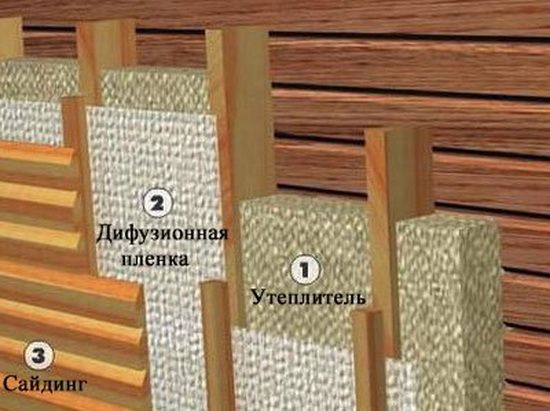

When insulating the walls from the outside, you need to do their preliminary crate. The basalt slab is laid with a slight gap from the final cladding to provide ventilation. It is attached to the base of the wall with self-tapping screws.
Then the windproof film is laid. The work is completed by finishing with siding or any other external coating material (lining, porcelain stoneware, etc.).
Back to the table of contents
Insulation scheme for the external facade of the building.
The peculiarity and advantage of such a material for keeping warm in the house is its versatility. Basalt can be used for both exterior and interior decoration. Moreover, it is completely harmless and environmentally friendly.
It contains no phenolic compounds, the fumes of which are very harmful. They can lead to various diseases. The use of this material leads to a decrease in the total cost of heating the house by an average of 60-65%.
Plates made of this material retain heat very well, since they have a rather low thermal conductivity. At the same time, they protect the room from excessive moisture penetration into it. Therefore, the combination of these factors together allows you to ensure good air circulation and create a comfortable environment in the house.
The construction of basalt slabs is such that their installation will not cause much trouble. They have a fairly reliable and durable structure.
Therefore, they can withstand fairly strong loads without deforming and retaining their appearance. With a competent approach to work on insulation and skillful handling of the assembly tool, you can quickly complete the fastening of this coating.
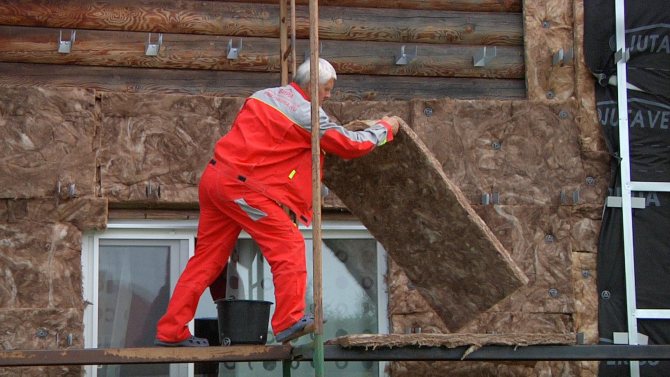

Various materials are used to insulate the facade of a house from a bar.
Nowadays, basalt thermal insulation boards are considered the best materials for insulating the walls of the house from the outside. Mineral wool and foam are also often used, but the first material is not so environmentally friendly, and the second does not breathe. Insulation of the facade with basalt slabs: video and photo materials about insulation in one article.
Is there any harm to health during installation?
There are many different myths and speculations around stone wool, including about its harm to humans. However, scientists have proven that if only high-quality raw materials and approved chemical additives are used in the manufacture of the material, then the harm from such a heater will be minimized. So, the basalt, from which this heat-insulating insulation is made, is considered an environmentally friendly natural material. Formaldehyde and phenolic resins are used to bind its fibers, but their content is negligible.
Some people confuse glass and stone wool, and believe that the dust emitted by the materials is harmful to human health. These are two completely different insulation materials, the first of which is made of broken glass and is really unsafe, but the second is made from natural basalt rock and its dust does not have such a harmful effect on humans. However, only branded thermal insulation products are considered harmless.
Many inexperienced builders often confuse stone wool and glass wool, although in fact they are two different materials belonging to the same class of mineral wool.Because of this, a common myth has arisen that stone wool, like glass wool, is also harmful to health, damaging the eyes and lungs. But this is only a delusion.
The point here is in its special structure. Insulation - stone fiber, bound with formaldehyde resins, they do not collapse and do not spread harmful substances. Therefore, we confidently declare that this building material is absolutely safe.
Before properly insulating the wall with mineral wool, you need to determine where the work will be carried out. After all, the insulation of the walls of the house with cotton wool on each site will look different. One technology is used on the facades, and a completely different one on the attic.
Balcony and loggia


Effective insulation of a house with stone wool directly depends on the quality of the surface preparation. Therefore, it is logical to briefly talk about it.
- Remove all unnecessary garbage from the loggia. Take the necessary measurements by calculating the amount of mineral wool. Assess the load on the floor.
- Next comes the glazing of the balcony. Here, it is better to give preference to plastic windows. Seal all cracks in frames and fencing with polyurethane foam. This will greatly protect the balcony from moisture and cold.
- Waterproofing is the next step. Protective agents (roll or coating) must first of all be applied to the floor and ceiling. But wall protection is also desirable.
Only now you can proceed directly to the installation. Thermal insulation with mineral wool slabs is as follows:
- The first step is to make the crate. It is most often made of wood (less often of metal). The optimal thickness of the timber is 1 cm more than that of the stone wool slab. The dimensions of the cells in the lattice should be about a centimeter smaller than a piece of insulation.
- Insulation for walls with cotton wool: laying goes from top to bottom: first the ceiling, then the walls and the floor. The ceiling needs a denser mineral wool, the usual one is suitable for walls and floors.
- A special glue is applied to the slab and it is put in place in the cell. Before that, do not forget to clean the surface of dirt and remove any irregularities.
- You can press the board firmly and evenly using plywood of a suitable size. Thermal insulation: Rock wool is the best material for this.
- The last stage is vapor barrier with penofol (it is sometimes replaced with ordinary polyethylene).
After you have installed the rafters and laid the roof on them, you can start insulating the house with cotton wool. But first you need to create a layer of waterproofing. It will not allow water to get onto the mineral wool and wooden structures. The best material for this is ordinary polyethylene. Fasteners are carried out with a stapler.
If the layer of waterproofing goes over the entire surface of the roof (up to the ridge), then the insulation can only be placed up to the ceiling of the attic. This is only done to save money. High-quality repairs mean the entire roof is insulated.
When laying stone wool, the best option is when the width of the roof beams is equal to the width of the slab. In this case, they simply fit between them, attaching to the stapler. Additional reliability will be provided by the slatted crate or rope mesh laid from below. All the cracks formed are sealed with polyurethane foam, and the crate (if it is made of wood) is treated with an antiseptic. The stone wool of the wall slabs insulates perfectly.
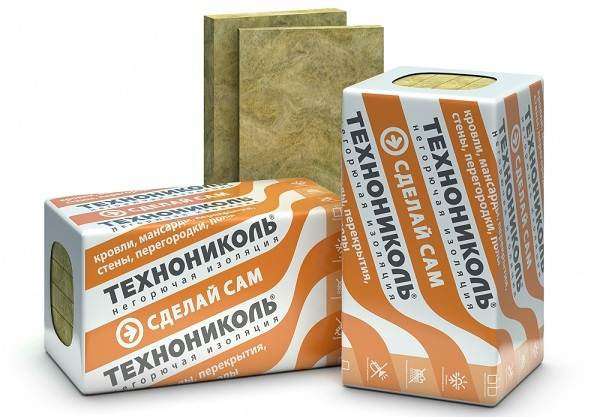

The last is the vapor barrier layer. Many builders choose glassine as a suitable material - it is cheap and perfectly fulfills its functions. Attached to the rafters with a stapler, it is advisable to glue the attachment points with tape.
In the process of insulating a house, the question often arises: is it better to insulate the walls from the outside or from the inside? There are both disadvantages and positive aspects to each option. For the first option, they are as follows:
- High protection against cold, noise, sun and wind;
- Will not let the walls freeze, because moisture is released. For the same reason, mold and mildew do not form on structures;
- The area of the room inside will not decrease;
- There is an opportunity to choose any internal design, as well as, if necessary, to change it.
Convinced of the advantages of this method, we insulate the stone walls of the house. The traditional way of laying looks simple: the first insulating layer is mineral wool of medium density (75 kg / m³), it covers the unevenness of the wall; the second layer is high-density wool (from 125 kg / m³), its role is to create an even and hard surface of the wall, because this will facilitate the following finishing works.
In total, cotton wool for wall insulation on the outside should be a layer of 15 cm or more. The best option is when the thermal insulation is located between the load-bearing wall and the outer cladding.
We suggest that you familiarize yourself with: What to make ventilation in the bath
In practice, you can insulate the house with stone wool from the outside according to the following plan.
- The first step is to prepare the surface. Remove any irregularities from the walls and apply a layer of plaster. Sometimes it makes sense to apply a couple of coats.
- Next comes the installation of metal guides, they are fixed above the basement of the building with anchor bolts.
- How to properly insulate a wall with mineral wool? The first layer of heat-insulating material is installed (immediately followed by the second). Glue is applied to the back of the board and it is pressed against the wall. All external wall insulation with stone wool takes place according to the same scheme.
- Metal corners, which are attached to external slopes, will help protect the material from deformation.
- A facing brick is placed on top of the layer, the seams are sealed with plaster.
We examined the first installation method, called a ventilated facade. It is possible to insulate the walls with stone wool in the second way.
The second method is called "wet". The technology is only slightly different from the previous one. Stone wool: wall insulation:
- First, the wall surface is cleaned and primed.
- A special support for mineral wool is created.
- Then an adhesive mixture is applied to the plates and applied to the wall. The location of the pieces of insulation should resemble brickwork.
- The corner of the door or window opening should not be adjacent to the joints of the slabs. Their correct location is shown in the diagram:
- Further, after the glue has dried, the material is fixed with dowels with a large cap. They must completely enter the insulation without protruding above the surface.
- At the corners, a reinforcing mesh is attached, on which mounting plaster is applied, and the mesh is pressed into it. Plaster is again applied on top.
- Wet installation can be carried out only at positive temperatures: from 5˚C to 30˚C.
Both of these methods are equally good at insulating the house.
After you have insulated the walls with stone wool from the outside, you need to take care of some important things.
The layer of thermal insulation will increase the thickness of the walls by about 15-20 cm. Therefore, it is advisable to lengthen the slopes, ebbs and window sills so that weather conditions do not spoil the material.
If you decide to install more than two layers of mineral wool, then this is a bad idea. The more layers, the more air pockets between them. And they lead to a deterioration in thermal insulation properties.
Thermal insulation with stone wool from the inside is much faster and cheaper, and even novice builders can easily cope with this matter. However, work can only be done in a room where there is no high humidity. The advantages of wall insulation from the inside are as follows:
- Low cost and labor intensity.
- You can put insulation not only on the entire building, but also on individual rooms in which you will live. This is quite economical.
- It is permissible to work at any time of the year, regardless of weather conditions.
Thermal insulation of a house with mineral wool can be started by calculating the required amount of mineral wool. There is a special formula for this. Wall area (m²) multiplied by the thickness of the mineral wool (mm) and divided by the volume of the package.That is, if the area is 15, the thickness is 100, the volume is 0.432, then you need about three and a half packages.
Do-it-yourself wall insulation with stone wool is carried out in several stages. The general scheme of an insulated wall may look something like this: first there is a load-bearing wall, behind it is a layer of vapor barrier, then - thermal insulation, and another vapor barrier layer, at the end there is an interior finish.
Stone wool for interior walls is of medium density (look for values around 100 kg / m³). Such mineral wool will increase the wall thickness by 8-10 cm. Take this into account when carrying out repair work. It is possible to insulate a small room with mineral wool in one day.
One of the methods for implementing the above plan is using a relatively simple technology. Stone wool: installation:
- A solid support is created from metal hangers and profiles. You can put a foam tape under it to improve the thermal insulation in the room. If you plan to create two layers of mineral wool, then you will need one more additional frame.
- Then comes the vapor barrier. If polyethylene was chosen as the material, then a small air chamber must be left between the wall. It is allowed to fasten either with tape or glue.
- Stone wool insulation is placed inside each section in the frame.
- Then there is a layer of vapor barrier again. This time it is better to fix it directly to the metal profile with self-tapping screws.
- Plasterboard is placed on top and interior decoration is made.
The stone wool of the inner walls, like the wool of the outer walls, perfectly protects against unnecessary noise. This is especially useful in homes that are near roads.
Basalt insulation pros and cons
Basalt slabs are made of mineral fibers pressed into slabs.
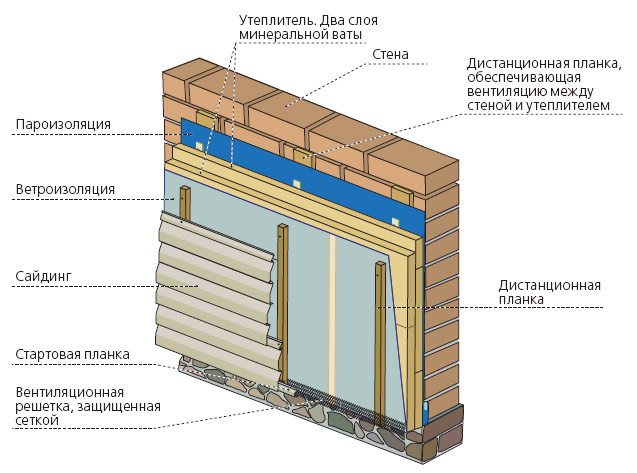

The fibers are interconnected with an adhesive based on various resins. It is made from natural raw materials. Basalt slabs can be used to decorate any living space, as well as food and childcare facilities.
Quite often, this heat insulator is used when decorating private houses and cottages from timber, air ducts and other structural elements. The use of basalt wool is often needed to provide thermal insulation for industrial equipment (boilers, furnaces, boilers). Basalt slabs can be used as light sound and thermal insulation in a horizontal fencing structure of any type of buildings and structures.
The main advantages of insulation include:


- Lightness. Does not burn. High heat and sound insulating properties. Suitable for most types of finishes. Elastic material, therefore does not break and is not afraid of mechanical stress. Does not collapse from moisture like glass wool. Eco-friendly. Does not block the flow of oxygen into the house, which does not disturb the microclimate wooden house. Easily mounted on any surface. There is no need to level the insulated surface.
Cons of basalt mineral slab insulation:
- The price for the material is higher than for mineral wool or foam. Not every glue can be attached to a wooden facade.
Origin and manufacture
The main component from which stone wool is made are rocks of metamorphic, basalt or marl origin. The most important indicator of cotton wool is such a property as acidity, which will indicate the amount of basic and acidic oxides in the composition of cotton wool. The most high-quality cotton wool is made from basalt fiber rock, while additives in the form of carbonate are necessarily introduced into it, which will regulate acidity.
Due to the high level of acidity, the level of resistance to water increases, which means that the cotton wool becomes stronger and more durable. There is another element that is included in the composition, and this is a binder.Its main function is to bond and bond the fibers, as well as to give the product a certain consistency and shape.
The following are used as connecting elements:


Binder based on bitumen.- Synthetic binder.
- Combined substances, which include several elements.
- Concrete binders.
The most popular binder in insulation for stone wool walls is a synthetic material, and it contains phenol-formaldehyde resins and plasticizing hydrofibrating additives. The material that became the basis for the creation of stone wool is also called "Pele's Hair". It looked like a thin thread that is formed from volcanic rocks.
With the modern stone wool manufacturing process, it all resembles a volcanic eruption. The rocks are sent to the furnace, in which the temperature reaches + 1500 ° C. They begin to melt and separate into fibers.
There are several ways to artificially reproduce this process:
- Blowing method with powerful fans.
- Roller and centrifugal method.
- Centrifugal and blowing method.
- A combination of spunbond and centrifugal blow molding.
- Other methods.
When the rock has already split into fibers, binders should be introduced and shaped. This process includes spraying a binder on the surface, which is absorbed into the cotton mass, or pour this substance over the cotton wool. The stone wool carpet, after processing, can be sent to the heat treatment process, in which the binder will begin to perform its functions. The binder content is approximately 3%. After that, the cotton wool is cut to the specified size, packaged and prepared for sale.
Facade preparation
Before starting work on warming the facade of a wooden house with basalt slabs, it is imperative to inspect the outer walls of the house, its basement and roof. To do this, you need to pay attention to the following actions:
- Look for visible cracks and damage at the junction of the foundation and the first crown, in window and door openings, walls. Look for strong bulges and curvatures, if necessary, cut, put guide bars 2 m long, 40x40 mm section on top. and finish the basement of the house with waterproofing materials, for example, roofing material or coating compounds: liquid glass, bitumen mastic. Clean the surface of the walls of the house from contamination, if there is an old sheathing, dismantle.
Installation of slabs on the facade of the house
Basalt slabs are installed wet and dry.


For a wooden house from a bar, it is better to choose a dry one, when the material is attached to the facade using a dowel of nails with a wide head. If the wet method is chosen, then a silicone-based adhesive and quartz sand is used. The fact is that it is more difficult to glue plates to wood than, for example, to cement or brick.
Basalt slabs for the facade of your house are taken with a density of at least 90-135 kg per cubic meter. m. The use of building material with a lower density is not worth it, as it is soft and can slide over time from a vertical wall.
Fastening the material along the entire facade is laborious, so not everyone can do it with their own hands. Basalt slabs will not only protect a wooden house from the cold, but also give it sound insulation no worse than a foam finish.
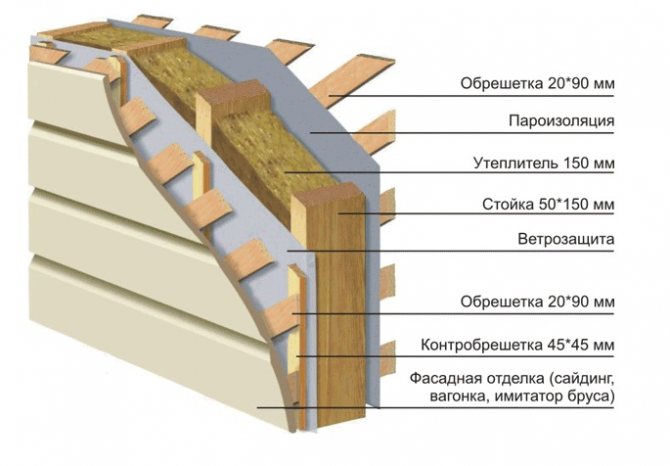

The only thing you should pay attention to is the weight of the plates. It is higher than that of polystyrene, therefore, even with the wet method, it is recommended to additionally secure the material with mushroom nails. More details on how the facade is insulated with basalt wool, in the video:
Installation of mats is carried out in accordance with the selected facing material. The following technologies are used for painting and plastering:
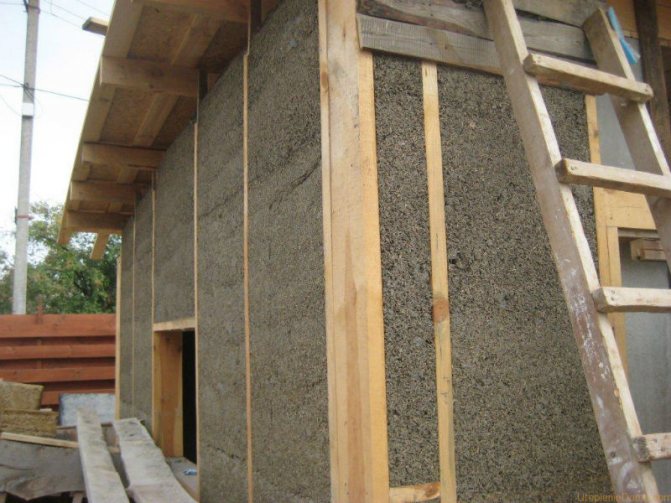

Horizontal strips are mounted on the plinth, they are needed so that the insulation does not slide down and lie flat.
It is necessary to fasten the planks strictly according to the level.Fix the material starting from the corners of the house around the entire perimeter, below the plank. (the method resembles a strapping). Since the standard height of the insulation is 50-60 cm, and the thickness is 20-100 mm, a belt of these dimensions will be obtained. The next stage is to attach the second row of plates, while it is necessary that it is located with the first in a checkerboard pattern. On top of the plate, cover with a hydro-vapor barrier and a reinforced mesh Then the structure is plastered and painted.
Installation under panels (siding, block house, lining, imitation of a bar):
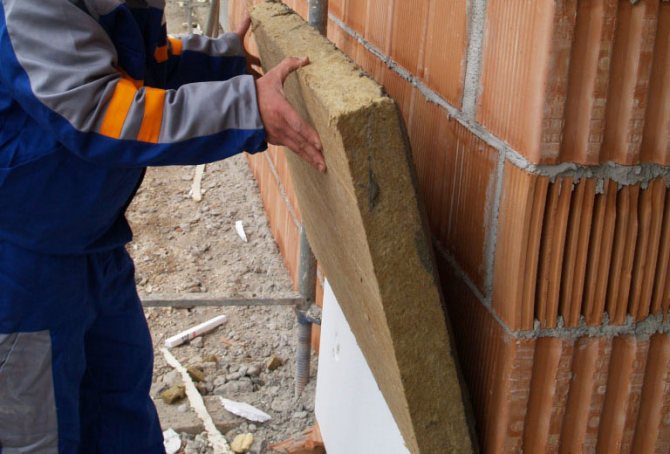

A crate is attached to the walls (vertically) from a bar or metal profiles with a step of 60 cm. To fasten the crate, you must start from the corners of the house, fixing on each side of a bar. Tip: In order not to measure 60 cm each time, make a stencil from a small piece of plywood or a wide Boards 60 cm long guide bars are fixed between the crate, they will support the heat insulator. A basalt slab is mounted between the crate.
It is fastened with dowels with a wide head. A hydro-vapor barrier is laid on top. It is mounted with a construction stapler directly to the lathing. The counter lathing is attached to the lathing. It is necessary in order to create an air gap in the structure. Facing material is attached to the counter-batten.
More about external wall and roof insulation
According to the rules, the building is insulated from the outside in a number of stages. To begin with, the frame from the outside is finished with OSB panels, the gaps in the plates should be about 2-3 mm, after which the gap is blown out with mounting foam. Insulation plates are covered from above with a waterproofing film, in order to protect the material and insulation layers in general from moisture and precipitation, the film is covered with double-sided tape at the joints.
After the final finishing is carried out, this is often done using siding panels. In this situation, a lathing of wooden beams is built on the wall covered with a film, on which siding panels are fixed.
Mineral wool slabs are placed between the lathing bars on the inside. It is necessary that the joint of the next layer of insulation overlaps the joint of the previous one by at least 150-200 mm.
Advice! For external wall insulation, mineral wool slabs with a density of at least 35-55 kg / m3 are excellent. Such insulation will not roll under its own weight, and is also not subject to subsidence.
At the end of the installation of the insulation, it is required, using polyurethane foam, to fill in all the gaps that appear at the joints of the wooden parts.
A vapor barrier film is stretched over a layer of mineral wool in order to protect the insulation from the effects of moisture coming from the interior.
The sequence of roof insulation practically does not differ from the one separated by the ceiling insulation, except for one detail. It is extremely important to lay a waterproofing coating on the insulation layer in order to protect the material from external factors (winds, rain and snow).
At the end of the installation of the truss structure, a vapor barrier coating is fixed from below, sheathing boards or sheet plywood are attached on top. After that, sheets of mineral insulation are installed, covered with a waterproofing coating. A counter-lattice is installed on top of it, then - directly the lathing and the roof material.
Outside the roof, insulation is much easier to produce. Of course, if the roof is ready, then you can carry out the process of insulation from the inside. There are disadvantages associated with convenience, since in this case, the mineral wool panels will have to be temporarily fixed before the vapor barrier is stretched.
External insulation of your frame house with mineral insulation guarantees minimal heat consumption through the walls and will significantly save your budget for heating your home in the cold season.This type of insulation will provide natural ventilation to your home, as well as provide excellent sound insulation.


Insulation of the frame structure
Basalt insulation near
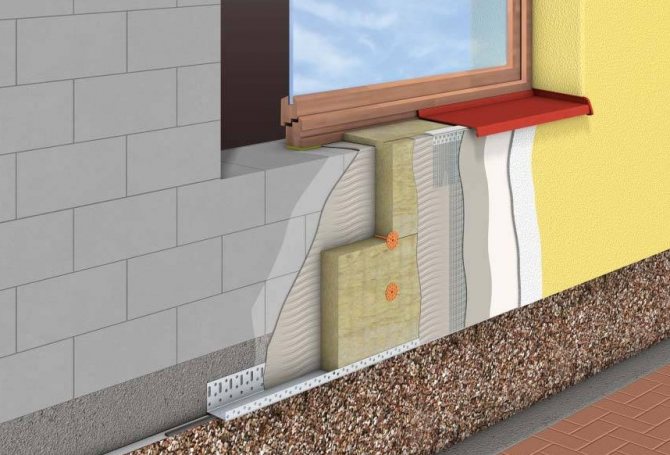

Basalt slabs are considered the best heat insulator for a timber frame house.
It is necessary to mount the insulation outside the structure, since during the interior decoration the frame remains unprotected and condensation will accumulate between the heat insulator and the timber. It gets into the capillaries of wood and will cause rapid decay and mold. When insulating frame houses, special attention should be paid to the vapor and waterproofing of the structure.
The penetration of moisture inside the house is unacceptable. In this case, the design of the facade finishing must be ventilated.
Since the temperature difference between the inside and outside of the building will be significant in winter, condensation may form. For better insulation, you can use basalt slabs foiled on one side. The price for them is higher, but the house will be protected from moisture.
At the same time, it is necessary to qualitatively waterproof the foundation of the house, since the tree will absorb moisture from the foundation and it will be difficult for it to erode from the structure with slabs. A basalt slab with a thickness of more than 2 cm is chosen for insulating a wooden frame house, or it is necessary to make a double structure.
Positive and negative characteristics
Mineral insulation is divided into three different types:
- Glass wool - made from glass melts;
- Slag - slag is the raw material;
- Stone - made from stone rocks;
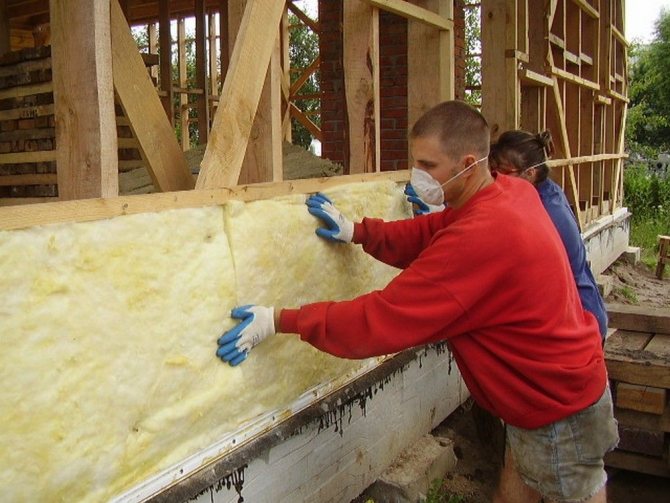

Glass wool
It is a type of mineral wool, which is a fibrous insulation made from molten glass bonded with resins.
The obvious advantages are: airtightness, immunity to chemical solutions, frost resistance, immunity to mold and fungus.
The disadvantages include only two points: shrinkage reaching 80%, low service life, not exceeding 10 years.
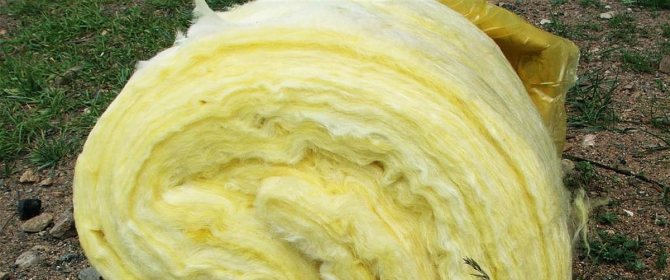

Basalt (stone) insulation
An excellent vapor barrier material, which turns out to be one of the best heat and sound insulation materials. This insulation is produced from stone rocks with the addition of bentonite clay and urea resins.
The indisputable advantages of such a material are: increased density, practically no shrinkage, not exceeding 5%, it does not rot, does not grow moldy, and is not susceptible to fungus.
Of the shortcomings, only one point can be noted, namely high moisture absorption.
This type is made both in rolls and in tiles, the density of the insulation depends on this, and in different cases it can vary from 30 to 100 kg / m3.
Slag
It is produced from blast-furnace slag, which is a waste of the metallurgical industry.
Of the advantages of this material stand out: elasticity, flexibility, so it can be used even for round areas, and most importantly - low cost.
The disadvantages are poor tolerance to temperature changes, and even when wet, acid is released that destroys the metal.
A very important positive quality of mineral insulation is its unique resistance to critically high temperatures. Such material is practically incapable of catching fire, since the phenol-formaldehyde resins contained in the composition are not subject to combustion. Even when exposed to direct fire, the fibers do not ignite, but they can melt slightly, easily tolerating temperatures in excess of 800 degrees.
Speaking about the heat capacity and heat-retaining qualities, one can note the fact that the mineral wool tolerates a drop in temperature, sometimes even below -160 degrees, without any problems.


But it should be borne in mind that when insulating the structural areas, the structure of the mineral wool is subject to deformation, which, in turn, can lead to the appearance of "cold bridges". Unless you can start worrying about it not earlier than after 10-12 years of use.
When choosing a heater, you should take into account the installation location and operating conditions. Mineral wool, formed in the form of mats, has a long service life, and will also provide a high level of heat capacity.
It is worth paying special attention to the thickness and density of the mineral insulation. Price varies based on technological characteristics, but this should not be the determining factor when choosing.
Taking into account all the factors, you can make the right choice and provide yourself with stable and comfortable temperatures in your home during the most severe frosts.
